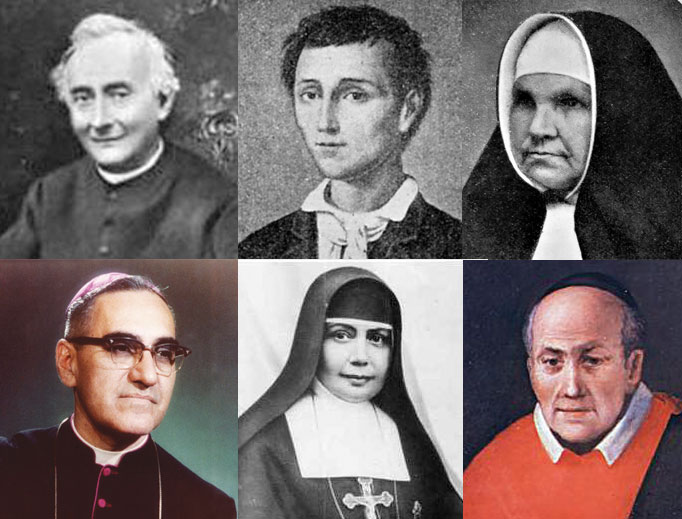Meet the New Saints to Be Canonized Oct. 14
Paul VI joins six others being raised to the altars.

The canonization of Pope St. Paul VI (see related coverage here) Oct. 14 occurs at the same time as six other new saints are raised to the altars. The new saints were announced in two groups. The first six, including Pope Paul VI and Archbishop Óscar Romero, were named in May by Pope Francis after the formal approval of miracles. The seventh saint, Nunzio Sulprizio, was added to the list in July.
Archbishop Óscar Romero (1917-1980)
The archbishop of San Salvador, El Salvador, from 1977 until his martyrdom, Archbishop Romero was an outspoken opponent of the political strife and injustice in his country, although he did not support liberation theology. Ordained a priest in 1942, he studied in Rome and served for many years as a parish priest, as auxiliary bishop of San Salvador and as bishop of Santiago de María. He was murdered March 24, 1980, while saying Mass, and his assassins were never brought to justice. He was declared a martyr by Pope Francis in early 2015 and beatified in May 2015 in San Salvador before a crowd of more than 250,000 faithful.
Father Vincenzo Romano (1751-1831)
Father Romano spent almost his entire life as a parish priest in the area around his native Naples, Italy. Ordained a priest in 1775, he spent many years at the Church of Santa Croce in his hometown of Torre del Greco, where he was given the name “The Worker Priest” because of his inexhaustible labors on behalf of his flock, especially the poor. He famously helped rebuild Torre del Greco after an eruption of Mount Vesuvius in 1794 destroyed most of the town.
Sister Nazaria Ignacia de Santa Teresa de Jesús March Mesa (1889-1943)
A native of Madrid, Spain, Nazaria Ignacia was called to the religious life at the age of 9 and joined the Congregation of the Little Sisters of the Abandoned Elderly at the age of 19 in Mexico. She was sent to Bolivia, where she spent 12 years caring for the elderly. Sister Nazaria later founded the Congregation of the Missionary Sisters of the Pontifical Crusade to proclaim the Gospel and promote human dignity. Her labors took her to Spain, Uruguay and Argentina, where she died.
Father Francesco Spinelli (1853-1913)
A diocesan priest, Father Spinelli was born in Milan, Italy, and ordained a priest in 1875. Moved by his love of the Eucharist, he helped establish the Congregation of the Sacramentine Sisters of Bergamo with St. Geltrude Comensoli that was devoted to the Eucharist and Eucharistic adoration. He later founded the Sisters Adorers of the Blessed Sacrament in Cremona, Italy. Today, houses of the Sisters Adorers are found in South America and Africa. Father Spinelli died in Rivolta d’Adda, near Cremona.
Sister Maria Katharina Kasper (1820-1898)
A native of Dernbach, Germany, Maria Kasper felt a call to the religious life, but her family’s unfortunate economic circumstances prevented it for many years. Finally, in 1851, she was able to establish the Poor Handmaids of Jesus Christ to care for the poor, the sick and children. The sisters arrived in the United States in 1868 and settled in Indiana. Eventually, the congregation opened houses in the United States, Europe, Mexico, India, Brazil, Kenya and Nigeria. Sister Maria died in Dernbach.
Nunzio Sulprizio (1817-1836)
Nunzio Sulprizio died at the age of 19, but his life was filled with extraordinary suffering. After family tragedies, he was raised by a physically abusive uncle whose beatings left him with a crippled left leg. Eventually rescued by another uncle, he moved to Naples, where he was stricken by bone cancer and had his leg amputated. Called “our little lame saint,” he was a beloved figure in Naples for his joy and love for the poor and sick. He died after immense suffering and offered it all with patience and love for Christ. He is a patron of the disabled.
Matthew E. Bunson is a Register senior editor.
His latest book is Saint Pope Paul VI.
- Keywords:
- matthew bunson
- matthew e. bunson
- new saints

















